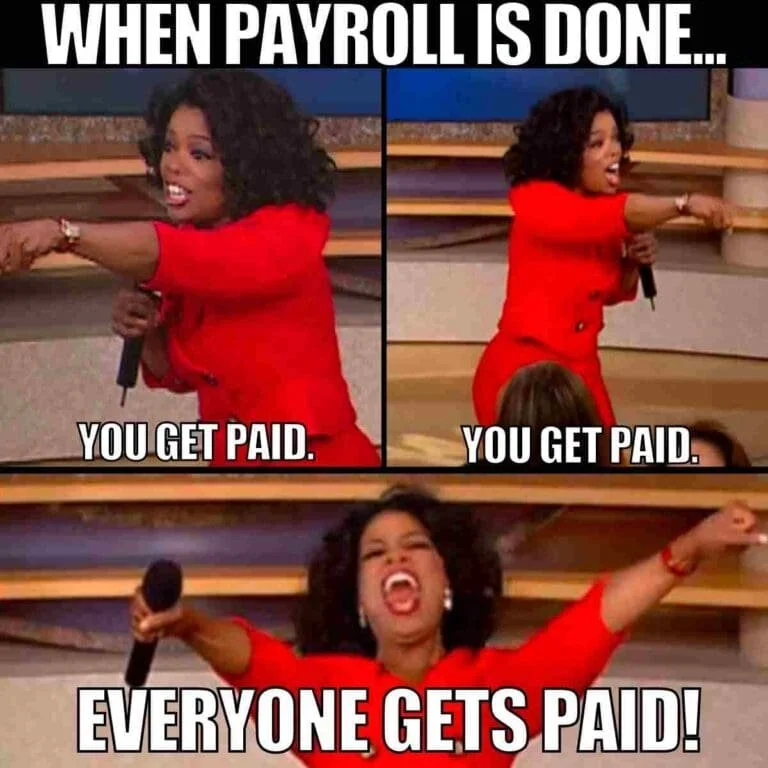When Do You Need to Hire Human Resources for Your Business?
This is a question I get a LOT. I work with several small businesses and nonprofits with 50 or less employees. These groups tend to assign HR functions to one or two people within the business. Standard guidance recommends hiring an HR-specific person when you have anywhere from 50-100 employees.
I usually get this question when a client has a lot of employee issues and can’t quite get the higher level of guidance needed for difficult situations. This is common when HR is part of a person’s job versus the sole focus. Navigating difficult employee issues requires experience with these situations and knowledge about current HR practices and laws.
While AI programs can certainly provide suggestions here, I always recommend a human for guidance because every human is unique. Blanket suggestions can provide general direction, but I find that most difficult employee issues are connected to other things happening in the business. Context is just as important as content here.
In this month’s newsletter, I am sharing my answers to the question, “When Do You Need to Hire Human Resources for Your Business?” This will include an overview of what human resources entails, what level of human resources support you might need, and how technology and consultants may support you as easily accessed capacity. You ready?
STEP #1 - Assess Your HR Need Level
The first step is assessing your need level. What does that mean? The levels of work within human resources break down this way:
1. Basic tasks – managing timesheets, completing payroll, administering new hire paperwork and benefits enrollment, etc.
2. General support – handbook policy creation & updates, general guidance for employees, may also handle basic tasks or manage the person doing it
3. Culture manager – works with leadership team to assess employee capacity, create & support the workplace culture, may also handle basic tasks & general support
4. Strategic leader – part of executive leadership team, works to align business strategy with employee performance, coaches other internal leaders
Most of the time, I see businesses with 50 employees or less using a senior leader and/or entry-level employee to handle the basic tasks and general support levels. This approach may work with a small group, but you are sacrificing culture and strategy. And that’s okay if you can’t afford the culture & strategy portion right now. If you start experiencing higher turnover (more than 40%) in a single year, then it’s time to reconsider the approach.
STEP #2 - Invest in Technology and Data
People may not realize that a solid human resources function requires strong technology and accurate data. Strong technology includes timekeeping & payroll, performance reviews & regular check-ins, benefits enrollment, and recruiting/hiring. Technology investment in these areas will reduce headaches for whoever manages HR and all employees, especially if employees can access information related to pay and leave.
Accurate data includes employee demographics, turnover rates, and budget tracking. In my 30+ years of experience with small businesses, I have found that tracking HR data is much easier to create on my own versus relying upon generalized HR technology. As I said earlier, context is just as important as content here. You may need to pull down data from strong technology and reconfigure the data to fit what you need to track.
Additionally, strong HR technology may open new pathways to state-by-state compliance updates, resource libraries, and general guidance for payroll and benefits issues. Many people are using AI these days for HR-related matters. I use it, too! However, here is my AI caution for HR support.
1. If you are using a public AI source such as ChatGPT, then you are uploading your company’s data to a public space. That’s a confidentiality issue.
2. If you are using AI outside of your company’s AI policy (if they have one), then you are violating company policy. Create an AI policy for your handbook NOW.
3. If you are using AI by yourself, then you are missing a key ingredient – collaboration with humans who have context. Share how you are using AI with leaders.
A good investment in HR technology (including responsible AI) and accurate data can increase the effectiveness of your human resources employees. Also know that larger HR technology companies may have more bells and whistles than you need. It’s good to identify your needs (now and in the next 2 years) so you can negotiate the best price.
Step #3 - Identify Outsourcing Partners
Businesses may also increase their human resources capacity by hiring consultants or interim services. Why lean into outsourcing when you could hire an HR person? The outsourcing option works for two main reasons: affordability and capability.
The business may not have the money to hire a full-time HR person and/or may not have the money to hire someone at the culture & strategy level. Yet the need still exists. Businesses may hire consulting firms who offer HR support services as an annual membership package (Ex. Manages hiring for you & offers x HR coaching sessions for a certain price annually). Other firms may offer fractional services where a specific consultant works with your business for XX number of hours per month. These options may cost less than hiring a full-time HR person.
Another reason for outsourcing HR functions is capability. The business may only need this higher level of support for a set of time. For example, a business may be going through a major transition (ex. Program expansion) and needs strategic advice on workforce planning. Many businesses also use outsourcing to train new leaders and provide custom coaching & development for employees.
Someone in the business will need the capacity and capability of working with the outsourced HR option. This requires time for regular check-ins with the outsourced HR option and the business contact having some knowledge of HR.
How do you know who to hire for outsourcing HR? First, ask your friends and colleagues about their experiences. Second, interview at least 3 different options to see and understand their differences. Third, ask about the outsourcing option’s approach to managing their own people. That’s usually a good indicator of how they really feel about employees. Finally, get a clear contract in place when you make the hire.
STEP #4: Make Your Decision
At this point, you have identified the level of HR support needed, investigated your technology and data needs, and explored the outsourcing options. Now it’s time to decide on your next HR step.
Here’s some general guidance that I give to clients:
· Get really clear on your HR needs and adjust job descriptions and decision-making responsibilities accordingly. You don’t want to duplicate efforts or create confusion for employees.
· Invest in technology as much as you’re investing in people. Technology can work on the basic stuff while people can push your strategy forward.
· Work within your budget. Most outsourcing options start at $2500 and go up from there. Most fractional options start at $10,000 per year (from what I’ve seen).
· If you want a consistent HR connection with an outside firm, then you may want to consider a smaller firm or single consultant.
· Review your decision quarterly and adjust as necessary.
A quick and easy measure for your needs is reading this article and answering the questions in it. If you don’t understand the budgeting process, then you need help.
If you've read this far, then I bet you are looking for more guidance. You can always book a free 30-minute call with me. I have HR support packages starting as low as $2500 for 12 months.




